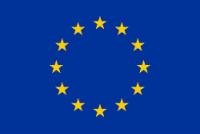-
Funding
Funding
HFSP supports novel, innovative and interdisciplinary basic research focused on the complex mechanisms of living organisms. A clear emphasis is placed on novel collaborations that bring biologists together to focus on problems at the frontier of the life sciences.
-
Awardees
Awardees
In this section you find information about the awardees in the HFSP scientific programs. This includes a searchable database of HFSP awardees, information on the HFSP Nakasone Award and other achievements by HFSP awardees.
- News & Impact
-
Events
Events
HFSP promotes and participates in several events every year. We are committed to bringing together the scientific community and forging new opportunities to network and have scientific discussions that help to create bridges and partnerships for the future of frontier science.
-
About
About
The Human Frontier Science Program is a program of funding for frontier research in the life sciences. It is implemented by the International Human Frontier Science Program Organization (HFSPO) with its office in Strasbourg. Here you can find all you need to know about the HFSPO.
Awardees
Charting the origin, diversity and biogeography of small proteins in the global ocean microbiome
MIRAVET-VERDE Samuel (.)
. - Swiss Federal Institute of Technology in Zurich (ETH Zurich/ETH Zürich) - Zurich - SWITZERLAND
SHINICHI Sunagawa (Host supervisor)
A polymicrobial adaptive evolution framework to investigate co-evolution to stress
MOZZACHIODI Simone (.)
. - University of Cambridge - Cambridge - United Kingdom
KIRAN Patil (Host supervisor)
Activation and cargo interaction of molecular motors
NAAZ FARHA (.)
. - University of Warwick - Coventry - United Kingdom
ANNE Straube (Host supervisor)
Unraveling the mechanism of schistosome egg migration in a complex host environment
OCHOLA Lucy (.)
Strathmore University -CREATES - . - .
OKEYO Kennedy (.)
Purdue University, West Lafayette, IN - West Lafayette - United States
Uncovering the Molecular Mechanisms Behind Chromatin Modification-Directed Mutation Bias
OYA Satoyo (.)
. - The Regents of the University of California (University of California Davis) - Davis - United States
GREY Monroe (Host supervisor)
Hijacking mosquitoes: how arboviruses manipulate vector behaviour
PALATINI Umberto (.)
. - The Rockefeller University - New York - United States
LESLIE Vosshall (Host supervisor)
Coevolution of body morphology, neural circuits, and behavior
PHELPS Jasper (.)
. - École Polytechnique Fédérale de Lausanne (EPFL) - Lausanne - SWITZERLAND
PAVAN Ramdya (Host supervisor)
Ant aggregation pheromones: from social behavior to neural coding
ROSSI Matteo (.)
. - The Rockefeller University - New York - United States
DANIEL Kronauer (Host supervisor)
Membrane factors ensuring robustness of photosynthesis on a warming planet
SACCON Francesco (.)
. - Wageningen University and Research - Wageningen - NETHERLANDS
HERBERT van Amerongen (Host supervisor)
EMILIE Wientjes (Host supervisor)
Studying the role of synaptic connectivity in learning and memory via new voltage imaging techniques
SHEINTUCH Liron (.)
. - The Regents of the University of California, Los Angeles - Los Angeles - United States
PEYMAN Golshani (Host supervisor)
In vitro control of cell extrusion through curved surfaces
SHEN Yuan (.)
. - CNRS dr01 - Villejuif - FRANCE
BENOIT Ladoux (Host supervisor)
Building mechanical protocells by coupling stress generating active fluids to soft interfaces
SHIN Seungwoo (.)
. - The Regents of the University of California, Santa Barbara - Santa Barbara - United States
ZVONIMIR Dogic (Host supervisor)
Functional proteomics to dissect spatiotemporal dynamics of viral RNA bound macromolecular complexes
SINHA AMEYA (.)
. - Helmholtz-Zentrum für Infektionsforschung GmbH - Braunschweig - GERMANY
MATHIAS Munschauer (Host supervisor)
Epigenetics of aging-associated behavioral changes and loss of brain plasticity using the ant model
SOREK Matan (.)
. - The Trustees of the University of Pennsylvania - Philadelphia - United States
SHELLEY Berger (Host supervisor)
Molecular and morphogenetic characterization of early neurogenesis in cephalopods
STOCK Jessica (.)
. - Marine Biological Laboratory - Woods Hole - United States
CAROLINE Albertin (Host supervisor)
Behavioral functions and microcircuit mechanisms of heading representation in larval zebrafish
TANAKA Ryosuke (.)
. - Technical University of Munich (Technische Universität München, TUM) - Munich - GERMANY
RUBEN Portugues (Host supervisor)
Genetically encoded reporters for brain-wide studies of neuronal function
TIRUKOTI Deva Nishanth (.)
. - Massachusetts Institute of Technology - MIT - Cambridge - United States
ALAN P. Jasanoff (Host supervisor)
Semantic-motor representation and plasticity for M1
TSAY Jonathan (.)
. - Medical Research Council Cognition & Brain Sciences Unit - Cambridge - United Kingdom
TAMAR Makin (Host supervisor)
Understanding tumor-immune interactions in cancer initiation and progression
VEGA-PÉREZ Adrian (.)
. - Weill Medical College of Cornell University - New York - United States
LUKAS Dow (Host supervisor)
Mapping the functional connectome for conscious perception
WESTERBERG Jacob (.)
. - Netherlands Institute for Neuroscience-NIN - Amsterdam - NETHERLANDS


































